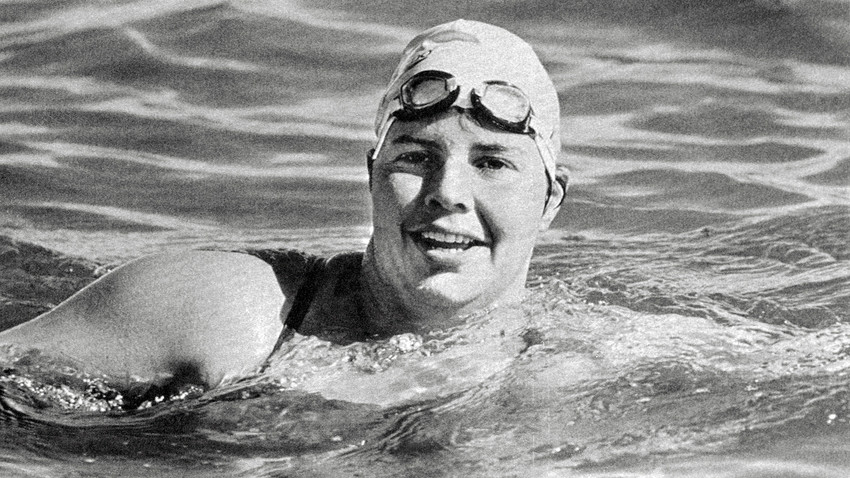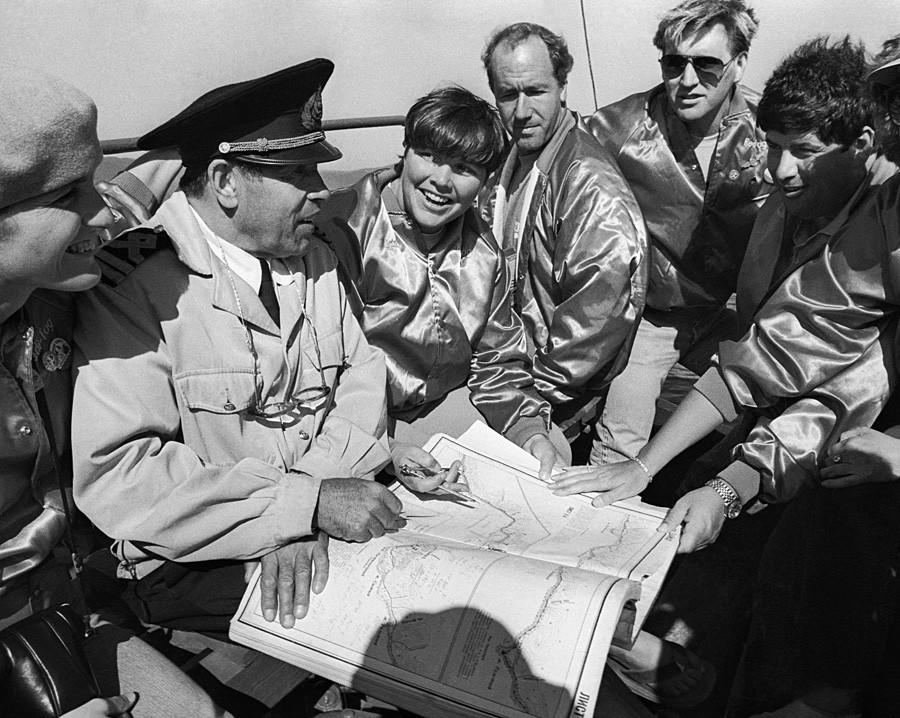How an American swimmer melted the ice of the Cold War

Lynne Cox, 30, succeeded in swimming across the 2.7 mile Bering Strait.
Getty ImagesIn 1987, 30-year-old Lynne Cox almost froze to death swimming across the Bering Strait from the U.S. to the USSR. Her goal, in addition to making athletic history, was to acquaint herself with the Soviet society she had been taught to fear. Not only was she the first person to accomplish this daring feat, she succeeded in bringing the Soviets and Americans closer together.
Fraught territory
In the remote region that separates Russia’s

American swimmer Lynne Cox before a one-hour swimming from the Tolsty Cape to the Listvyanka village across the mouth of the Angara River.
Edgar Bryukhanenko/TASSFor more than 40 years, no citizens from either country were permitted to step onto the rocky shores of Big Diomede. Before a shift in Soviet and U.S. policy in 1948, indigenous Inupiat tribes had been hunting, fishing, and moving between these islands for thousands of years. But as Cold War tensions rose, native people were stripped of their lands, traditions, and the friendships they had made across the border. In fact, Lynne and her entourage, (a medical support team, two native guides, and a small group of journalists), were the first Americans allowed on Big Diomede since 1948. But first, Lynne had to receive special permission from the Soviet government. Over the course of 11 years, she wrote to four different Soviet leaders: Leonid Brezhnev, Yuri Andropov, Konstantin Chernenko, and Mikhail Gorbachev. Her only response came from the latter just two days before she attempted the swim - “the most significant experience of her life.”
The swim
Lynne was already an extremely accomplished swimmer: At the age of 14 she swam across the Catalina Channel, and at 15 and 16 she made
On Aug. 7,
A Soviet tea party
When she finally reached the shore, she was met by a handful of Russians including regional government officials, members of the KGB, and Soviet Olympic athletes. They greeted her warmly, lifting her up from the water and wrapping her in blankets. A picnic had been prepared on the beach with samovars of tea and biscuits. But Lynne’s body temperature was dropping rapidly. The Soviets led her to a tent where their doctor, Rita Zakharova, covered her with hot water bottles and a sleeping bag. Then, remarkably, the doctor herself embraced Lynne to warm her. “To have this human contact,” said Lynne in an interview with the BBC, “after so many years growing up afraid of the Soviets - and here was this person basically warming me up to get me back to life again.”
As a special surprise, the Soviets invited Inupiat natives to the gathering where they sang folk songs as Lynne recovered.
A treaty of friendship

World-renowned Swimmer Lynne Cox arrives at the 2003 Glamour "Women of the Year" Awards at the American Museum of Natural History, Nov. 10, 2003 in New York City.
AFPFour months after her historic feat, the U.S. and the USSR reached an agreement to eliminate their short and intermediate-range missiles. During the ceremony, which took place in Washington, Gorbachev led everybody in lifting their glasses for a toast:
“Last summer it took one brave American by the name of Lynne Cox just two hours to swim from one of our countries to the other. We saw on television how sincere and friendly the meeting was between our people and the Americans when she stepped onto Soviet shore. She proved by her courage how close to each other our peoples live.”
Lynne’s swim made athletic, social, and political history. Though, perhaps her most astounding accomplishment was inspiring mutual compassion between the world’s greatest superpowers.
To this day, there have been few other successful attempts to swim across the Bering Strait. Most recently, in August 2013, an international relay of swimmers from 17 different countries successfully swam from Vladivostok in Russia to the Cape Prince of Wales in Alaska.
If using any of Russia Beyond's content, partly or in full, always provide an active hyperlink to the original material.
Subscribe
to our newsletter!
Get the week's best stories straight to your inbox